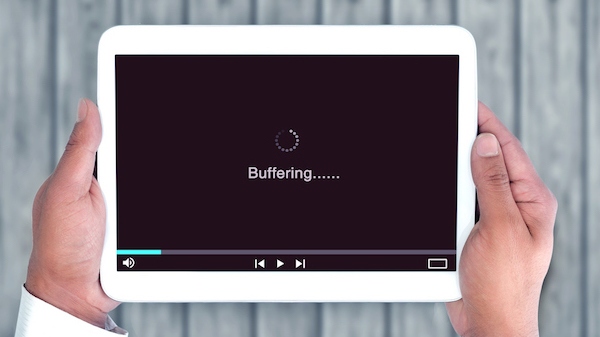BLOG
5 Behavioral Science Principles to Boost Your Outbound Sales
This article is for anyone who wants to improve their outbound sales pitch. We will outline 5 proven concepts that can be used to make your outreach more persuasive, and ultimately increase your reply rate. Each of these principles has been studied in depth by behavioral scientists (the experts at human decision making), then tested dozens of times in real campaigns sent through our outbound sales engine.
5 Behavioral Science principles we’ll cover:
- Cognitive Fluency
- Strategic Labeling
- Social Proof
- Loss Aversion + Reciprocity
- Imposter Syndrome

1. Cognitive Fluency
Cognitive Fluency is all about making it easier for your prospects to make a decision. Clear, to-the-point sentences help the reader understand your offering right away, lowering friction in their decision making process.
This does not mean using such simple language that it insults your prospect by assuming they are ignorant. On the contrary, using familiar terminology to their industry or role encourages the reader to imagine themselves using your solution.
In an outbound sales email, you have 1-2 seconds to capture the interest of your prospects. The optics of your email are just as important here as the content. Ever heard of TL;DR? Keep your emails as brief as possible (5 sentences or less), communicate directly how your offering can benefit the prospect, and avoid jargon that your audience won’t immediately understand.
Bad Example - Too Long/Complex Email
Hi {{FirstName}},
I’m the founder of an organization based in Denver, CO that hosts corporate trainings focused on gender inclusion. Some of the key topics of our trainings include self-advocacy, assertive communication, and building allyship between all employees.
I'm curious if your team ever struggles to keep Diversity and Inclusion content current with new research and cultural shifts?
We compiled some takeaways for retaining and developing women and marginalized people in the workplace, like eliminating the broken wrung effect and active bystander training, and I thought they might be of interest to {{Company}} as you work to be more inclusive and equitable. Women were still underrepresented - making up only 28% of SVPs and 21% of C-suite roles, respectively - and women of color are particularly left behind.
Can I share some of our other latest findings with you?
Good Example - Same Content, Short and Sweet Email Outreach
Hi {{FirstName}} - how are you?
Curious if your team ever struggles to keep Diversity and Inclusion content current with new research and cultural shifts?
We compiled some key takeaways for retaining and developing women in the workplace in 2021, and I thought they might be useful to {{Company}}.
For context, we’re an organization that hosts corporate trainings focused on gender inclusion (topics like self-advocacy, effective communication, building allyship).
Can I share some of our latest findings with you?
Results:
Reply rate: 12.2%
Warm rate out of total replies: 42%
Meeting conversion rate out of total warm: 80%
2. Strategic Labeling
Strategic labeling is a psychological phenomenon where you assign someone with a certain characteristic or attitude, and they proceed to act exactly as they were labeled. If used effectively, labeling can create feelings of aspiration or alignment with a higher goal.
For example, if you are doing cold outreach to recent Founders who have lots of experience in their field- you could refer to them as “industry veterans” rather than “startup founders.” The first option induces a tone of leadership, expertise and respect, and will resonate better with seasoned professionals, especially if you are asking for feedback or to provide a demo of a new product.
In the LinkedIn message below, instead of saying “we work with nonprofit directors,” we refer to them as big thinkers and change makers. This creates an atmosphere of respect while encouraging the prospect to keep an open mind going into the pitch.
Good Example - Strategic Labeling Increases Reply Rate on LinkedIn
Hi {{FirstName}},
Reaching out because we work with (and admire) lots of big thinkers and change makers.
My firm creates visual stories that compel people to take action, so you don’t have to be in the room for your organization to be impactful.
Can I share an example?
Results:
2X reply rate when we applied this strategic labeling tactic
88% of prospects who replied to this message were Warm
3. Loss Aversion & Reciprocity
Consider these next principles a 2-for-1 deal. Loss aversion refers to the level of risk that a prospect is willing to take when purchasing a new product or service. Examples of dealing with loss aversion in the sales process include insurance, warranties, and free trials. We’ve found that a good way to combat your prospects' fears during cold outreach is to take a softer selling approach, with calls to action that aren’t too intimidating or committing. Enter: Reciprocity.
In social psychology, reciprocity means responding to an initial positive action with another positive action. Try offering your prospects something of value first (positive action #1), then encourage them to agree to an intro meeting or demo (positive action #2).
Bad Example - Hard Selling with No Clear Benefit for the Prospect
Hi {{FirstName}},
I’ve been working on technology that taps into buying triggers like fundings, job postings, ad spend, technologies, and recently hired CXOs to create targeted prospect lists.
We are decreasing the time salespeople spend researching contact information and relevant talking points for new prospects.
Do you have 30 minutes this week for me to demo our technology and see if it's a good fit for you?
Good Example - Acknowledging Benefits to the Prospect, and Offering Something Tangible and Non Commital to “Trade” for Their Time
Hi {{FirstName}},
In all honesty, I can't quite tell if you run outbound campaigns to acquire new customers, but I wanted to reach out and ask if you struggle with a specific pain point...
Does your team spend way too much time researching contact information and relevant talking points for new prospects?
If we could provide weekly downloads of super targeted, event-based prospect lists (ie. the right contacts at the right time), would that interest you?
Our technology taps into buying triggers like fundings, job postings, ad spend, technologies, and recently hired CXOs (like you!).
Can we build you a free sample list?
Results:
Reply rate: 16%
Warm rate out of total replies: 31%
Meeting conversion rate out of total warm: 65%
4. Social Proof
Research shows that we look to others who are like us, or who we aspire to be like, and aim to make similar decisions. This is a psychological phenomenon where we assume that experts, popular brands, celebrities, or experienced peers have more knowledge than us, and let their decisions/opinions influence our own.
In terms of sales and marketing, this means that if other people (especially well known or respected people) have purchased and found value in a product or service, you are more likely to purchase it yourself. In a outbound sales script, this could translate into the number of leads/deals/dollars you have generated for customers, sharing case study articles, or referencing experience with well known brands in an industry.
Bad Example - Explaining What You Do Without Industry Specific Examples or Statistics
Hi {{FirstName}}, how are you?
Hope {{Company}} is seeing a nice uptick in business lately!
I wanted to quickly tell you about our review management platform that enables businesses to collect negative feedback from customers BEFORE it makes it on a review site. Our goal is to help you increase positive reviews on Google.
I'm not sure if this is a big focus area for you right now, but I'd be happy to demo the platform for you.
Interested?
Good Example - Validation of Product or Service through Restaurant Social Proof
Hi {{FirstName}}, how are you?
Hope {{Company}} is seeing a nice uptick in business lately!
With the return of indoor dining, I wanted to quickly share about our online review engine that enables restaurants to collect negative feedback from customers BEFORE it makes it on a review site.
We recently helped Zoe’s Kitchen increase positive Google Reviews by 287%!
Do you have a few minutes for me to demo the automated communication flow that’s helping them improve their reputation?
Results:
Reply rate to generic campaign: 2%
Reply rate to Social Proof campaign: 11%
5. Imposter Syndrome
Imposter syndrome refers to the belief that you are not as competent as others perceive you to be, or that your success is actually based on luck and not your talent or abilities. Interestingly, it is usually high-achievers individuals who experience imposter syndrome because they are unable to internalize and accept their success.
The first example below is written for a startup Founder. Assuming that you have chosen to contact them because they have a promising business idea, the Founder is probably still worried about making it to their next round of funding, and doubting their abilities as an entrepreneur.
Good Example - Email Tapping into Startup Founder Insecurities
Hi {{FirstName}},
{{Company}} reminds me of other Y Combinator startups we work with, so I wanted to reach out.
Quick question…if we could help you de-risk your product roadmap for 2021 and ensure that you raise your next round of funding, would that interest you?
We act like your startup’s secret weapon, a unique hybrid of product builders and marketers, making sure that your company reaches the next stage.
It would be great to hear about your journey and share some takeaways from our recent projects. Would you be up for a quick chat?
Results:
50 warm replies and 15 meetings booked out of 250 cold prospects
Our second example is written for a VP of Sales who was hired within the last 6 months. Achieving a VP role at a large company indicates high levels of skill and leadership, which (according to imposter syndrome statistics) makes the VP all the more likely to be insecure about their strategies.
Good Example - LinkedIn Message Tapping into Insecurities in a New Role
Hi {{FirstName}} - how are the first few months in your new role going?
I can't tell if you’re running outbound campaigns to hit your year 1 sales goals, but we solve the most frustrating part of the process .... reliable prospect data.
Can I build you a custom sample to try out?
Results:
3X reply rate over copy that didn’t address new-hire fears
60% of replies were Warm
In Conclusion
The fact that you are still reading this article means that you care about relevant, thoughtful sales copy, and are probably doing a better job than most already. Viewing your pitches through the lense of Behavioral Science can spark a completely new approach, or help you make some minor tweaks that can make all the difference in your reply rates.
Incorporating each principle on its own can be a great way to build a multi-touch outreach sequence. You can also run them against each other as A/B tests to find what resonates best with your audience. After you’ve mastered applying each principle individually, it can be doubly effective to mix and match, as long as you don’t distract from the core purpose of your message. A busy startup founder suffering from imposter syndrome may also appreciate a simple, direct email (cognitive fluency) that offers a free resource (reciprocity) specific to their industry (Social Proof)!







